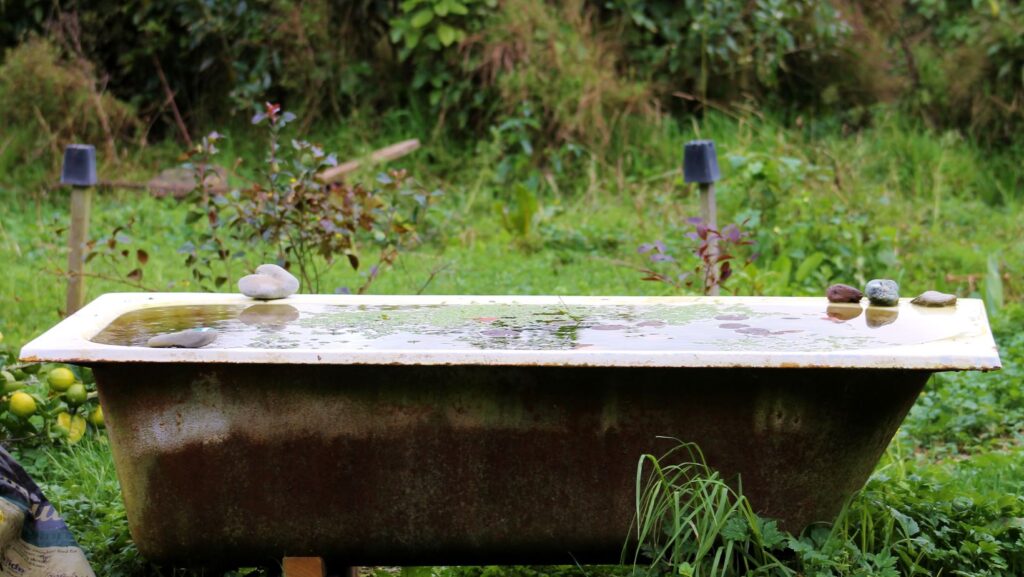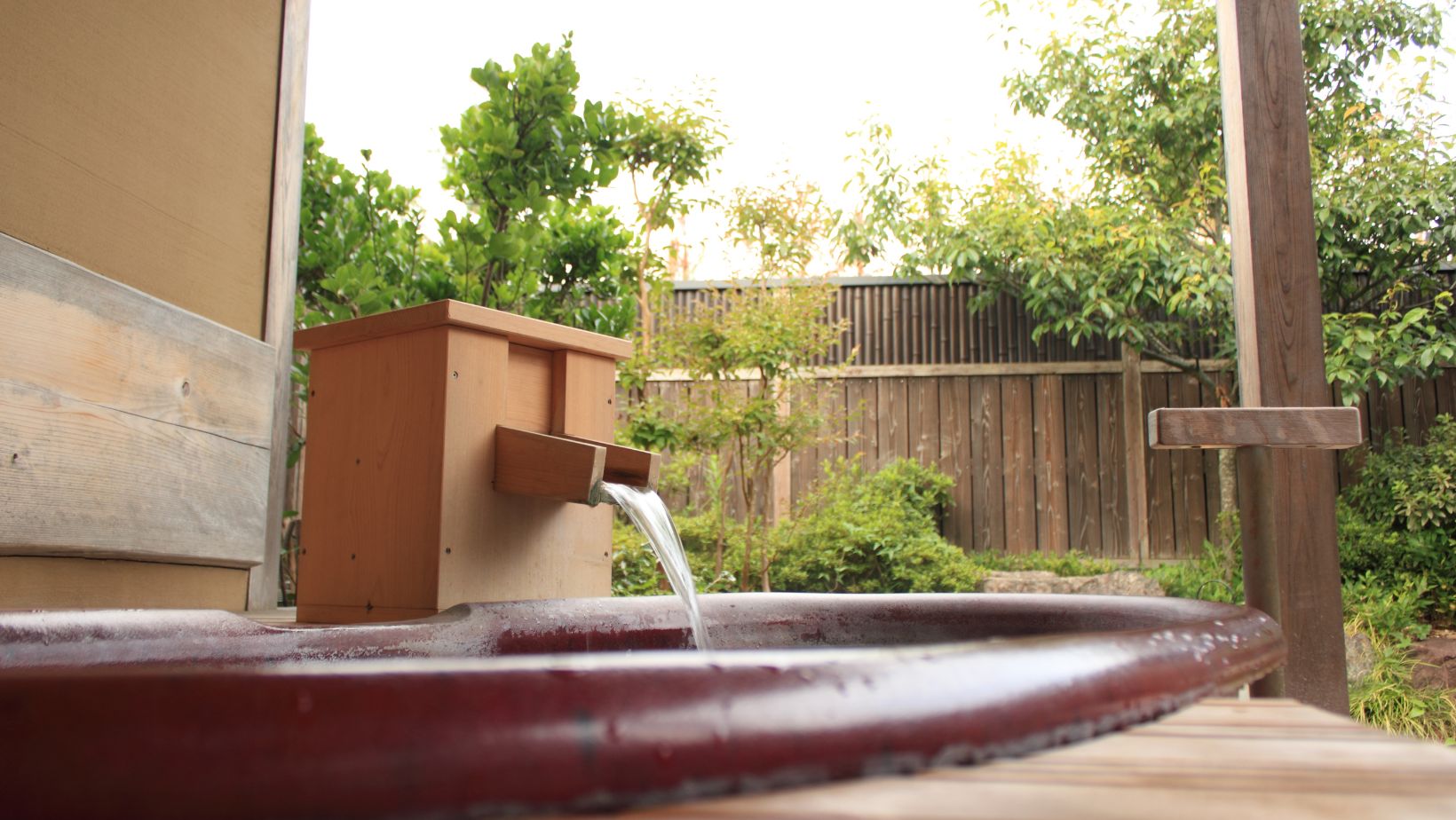
Last summer, whilst scrolling through Instagram, I stumbled upon something that stopped me mid-swipe – an old clawfoot tub nestled among wildflowers in someone’s garden. As a keen gardener who is always looking for unique features, I was instantly intrigued.
Garden baths – the practice of placing a bathtub in an outdoor setting – have quietly become one of the most captivating trends in British gardens.
My Own Garden Bath Journey
After weeks of research, knowing how important privacy is for me, I took the plunge and installed a vintage tub in a secluded corner of my garden.
The first soak on a warm June evening was nothing short of magical – steam rising around me while birds settled into evening songs.
My neighbors thought I’d gone barmy until I invited them for sundowners near the bath (filled with floating flowers for the occasion).
Finding the Perfect Spot
Privacy is naturally the top concern for most homeowners considering an outdoor bath. However, combined with a garden shed, log cabin, or playhouse, they can create a perfect garden getaway you can share with your family or dedicate only to yourself.
I positioned mine against an existing stone wall and planted tall ornamental grasses that create a natural screen whilst adding movement. Plus, I’ve put all of my things in a cabin log I got from Garden Buildings Direct, so no one could see my stuff around the garden.
Using a garden ladder to check different vantage points helped me identify potential overlooking issues before committing.
Choosing Your Tub
The bathtub becomes both the functional heart and aesthetic centerpiece of your outdoor bathing area.
Vintage clawfoot tubs remain the most popular choice for their classic appeal, though they’re devilishly heavy to position.
For a more budget-friendly option, galvanized stock tanks bring a charming farmhouse aesthetic for around £120-300.
Practical Considerations
Water supply can be as simple as filling your tub with a garden hose and using plant-safe bath products.
For drainage, I connected a simple plug and hose system that directs water to thirsty shrubs and perennials.
After finding spiders had taken up residence in my uncovered tub, I quickly fashioned a fitted cover from a tarp and bungee cords!
Creating the Perfect Atmosphere
I’ve planted lemon balm, mint, and lavender within arm’s reach of my tub for a spa-like experience.
Solar-powered copper string lights woven through nearby shrubs provide gentle illumination as darkness falls.
An old wooden crate treated with outdoor sealant serves as my side table, holding everything from a cuppa to a glass of wine.
The Unexpected Benefits
Beyond the obvious pleasure of a relaxing soak, I’ve discovered numerous unexpected benefits from my garden bath.
I’ve watched meteor showers, tracked the moon’s phases, and noticed migration patterns of birds I’d previously ignored.
My garden bath has become a mindfulness practice more effective than any meditation app I’ve tried.
Is a Garden Bath Right for You?
Consider your climate – I use mine from late March through early November in southern England.
Privacy requirements will vary based on your garden layout and neighboring properties.
Local water regulations are worth checking, though most garden baths use less water than maintaining a small water feature.
Getting Started Without Breaking the Bank
Begin with a simple setup – my initial installation cost under £300, including the secondhand tub.
Consider a temporary placement before committing to plumbing work or permanent structures.
Enhance gradually – add lighting, plantings, and accessories as you discover how you use the space.
From Trend to Timeless
What began as a niche trend has evolved into something more enduring for many British garden enthusiasts.
Garden baths represent a return to simpler pleasures and create moments of extraordinary beauty in everyday life.
Whether you’re working with a sprawling country garden or a modest urban patio, creating your own outdoor bathing sanctuary is more accessible than you might think.














